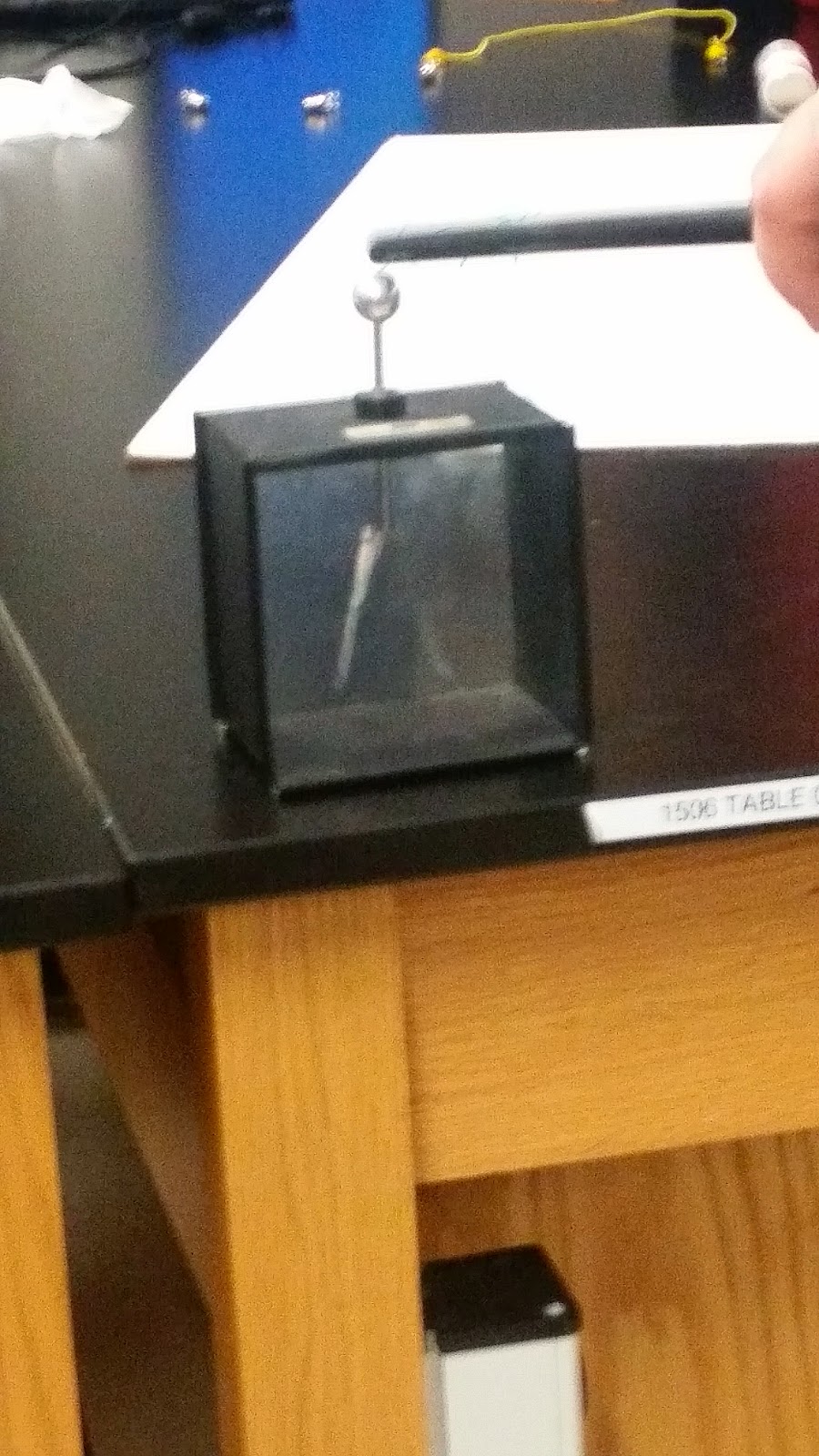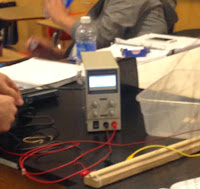Lab Day 17: DC Circuit Analysis
Purpose: The purpose of today's lab is to look at direct circuit relationships where we use light bulbs as resistors connected to a voltage source in both series and parallel. We will analyze how to make a light bulb brighter/dimmer and specifically look at different types of resistors.
We started by connecting a circuit in series and in parallel in order to maximize the brightness of the bulb. In order to maximize the brightness of the bulbs, we need to maximize the current delivered to the bulbs.
 Professor Mason then had a setup of two different circuits that was connected to a switch. When the switch was closed the bulbs lit up.
Professor Mason then had a setup of two different circuits that was connected to a switch. When the switch was closed the bulbs lit up.  When the switch was closed in the second circuit displayed, the brightness of the bulbs remained the same because the potential across remains the same in the circuit.
When the switch was closed in the second circuit displayed, the brightness of the bulbs remained the same because the potential across remains the same in the circuit.We measured the current using the ammeter to confirm our predictions that the current is the same through the wire as seen in our circuit diagram.
Resistors
We looked at colorful resistors that were found to have different resistances with different color bands and we found that each band is used to identify the resistance using the chart given.
Here, we found the resistances of 4 different types of resistors.
The board below shows the values for the resistances of each resistor calculated from the chart based on each color band.
We then looked at resistors connected in series and in parallel. We found that in series circuit the currents are the same but the voltage divides. In parallel circuits, the voltage is the same everywhere. The current divides and the voltage remains the same, therefore the current into a node is equal to the current out of the node.
Multiple Loop Problem
Finally we explore Kirchoff''s loop and current rule where Professor Mason gave us a problem with multiple loops. The calculations used to find the current in each branch was found using the basic steps shown to find each component.
In this part we use parallel and series circuit analysis to reduce the circuit to calculate the total resistance of a complex circuit.





























































